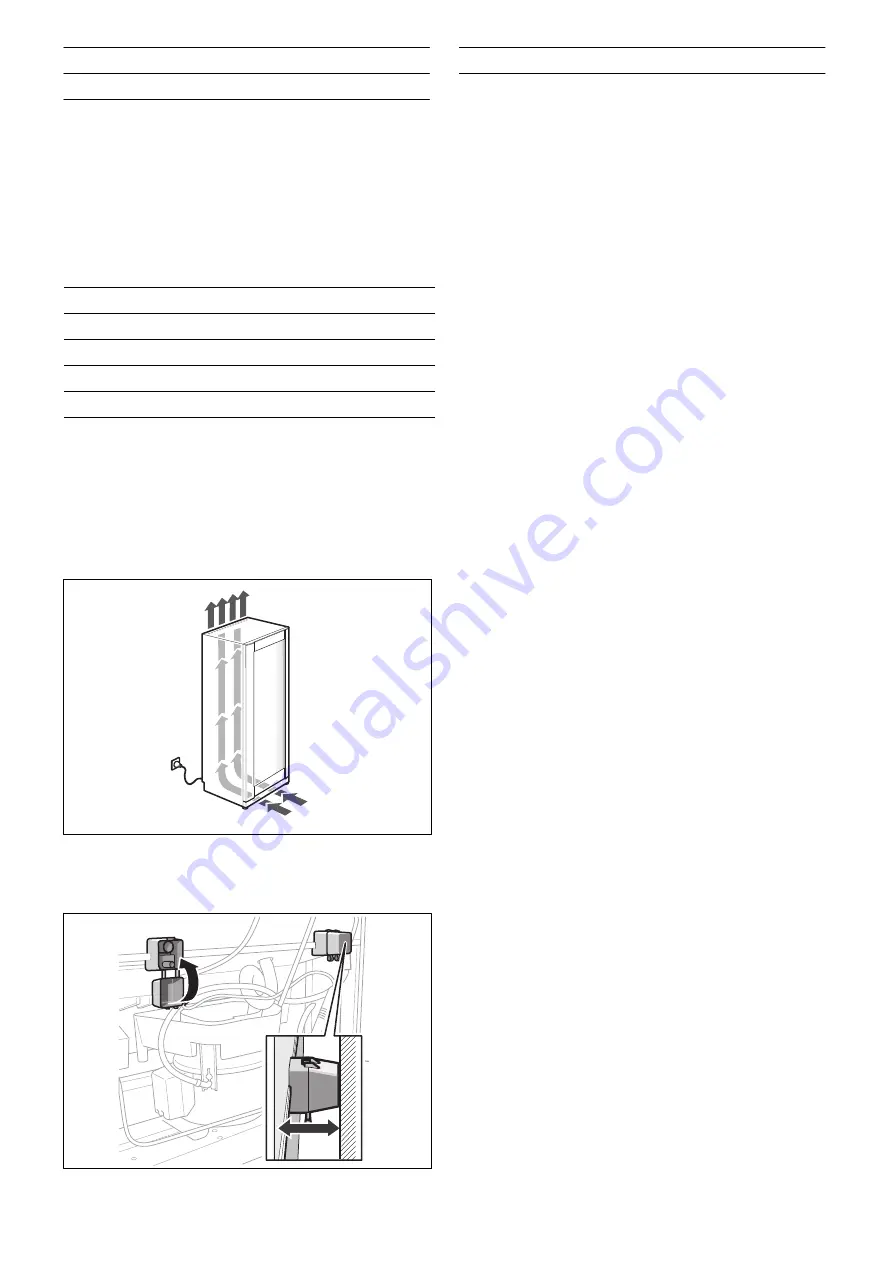
23
Observe ambient temperature
and ventilation
The appliance is designed for a specific climatic class.
Irrespective of the climatic class, the appliance can be
operated at the following room temperatures.
The climatic class can be found on the rating plate at the
bottom left‐hand side in the appliance.
Climatic class
Room temperature
SN
+10 °C to 32 °C
N
+16 °C to 32 °C
ST
+16 °C to 38 °C
T
+16 °C to 43 °C
Ventilation
The air on the rear panel of the appliance heats up.
The warm air must be able to escape. Otherwise,
the refrigerator must work harder. This will increase
the power consumption.
For this reason pull up the spacers provided on the
appliance's rear panel for the optimum distance to the wall.
Therefore: Never cover or block ventilation openings!
Connecting the appliance
After setting up the appliance, wait for at least 1 hour before
starting the appliance up. The oil contained in the
compressor may have been displaced into the refrigeration
system during transport.
Before starting the appliance up for the first time, clean its
interior (see section "Cleaning the appliance").
Electrical connection
The socket must be near to the appliance and easily
accessible after the appliance has been installed.
The appliance conforms to protection class I. Connect the
appliance to a 220-240 V/50 Hz alternating current supply
using a socket with protective earthing conductor which has
been correctly installed. The socket must be protected by a
fuse with a rating of 10 A to 16 A.
In the case of appliances operated outside of Europe, check
whether the voltage and type of current specified conform to
the values of your electricity grid. You will find this
information on the rating plate.
m
Warning
The appliance must never be connected up to an electronic
energy-saving socket.
Sinusoidal-commutated and line-commutated inverters can
be used with our appliances. Line-commutated inverters are
used with photovoltaic systems that are connected directly
to the national grid. Sinusoidal-communicated inverters must
be used with standalone applications (e.g. on ships or
mountain huts) that do not have a direct connection to the
national grid.
Summary of Contents for RW 262
Page 8: ...8 Türanschlag wechseln falls erforderlich Montage in der Reihenfolge der Zahlen ...
Page 22: ...22 Changing over the door hinges if required Installation in numerical sequence ...
Page 51: ...51 Reversibilità della porta se necessario Passi di lavoro nell ordine numerico ...
Page 65: ...65 Verwisselen van de deurophanging indien nodig Montage in de volgorde van de cijfers ...
















































